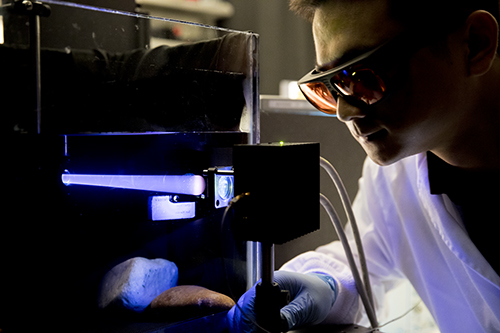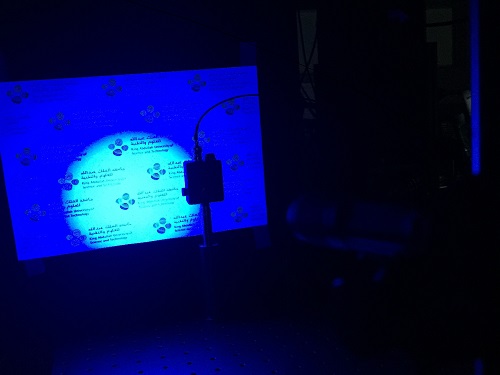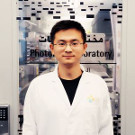Electrical Engineering
Unleashing ultraviolet brings visible improvement
High-speed communication systems based on ultraviolet radiation are now in sight.


UV-light scattering is used for diffuse line-of-sight optical communications.
© 2017 Xiaobin Sun
Military and civil authorities could benefit from secure optical communication systems that use light to carry messages between moving vehicles. Researchers at KAUST have now demonstrated rapid data transfer using ultraviolet-B (UV-B) light, which provides many advantages over visible light.
Optical communications systems using visible lasers and light emitting diodes (LEDs) suffer from interference due to the high levels of visible light in sunlight. What’s more, the transmitter and receiver must be aligned very precisely, which is very difficult for vehicles on the move.
“Accurate beam alignment for point-to-point (or line-of-sight) optical communication is challenging—slight movements of just a few millimeters might break the communication link,” says Ph.D. student Xiaobin Sun who worked on the project with professors Boon Ooi and Slim Alouini, alongside other coworkers at KAUST and the Chinese Academy of Sciences in Beijing. “This problem motivates us to look for a nonline-of-sight communication system.”
This is where UV-B becomes useful. UV-B from the sun is mostly absorbed by ozone in the upper atmosphere, so it doesn’t interfere with communications. Also, UV-B gets scattered in different directions by aerosols and common molecules, meaning the signal spreads out from the source to cover a wide area and accurate alignment of the beam is not required.
Sun, Ooi, Alouini and coworkers are developing high-performance UV-LED sources and highly sensitive detectors that receive UV signals quickly and accurately. In their latest work, they used an LED to send pulsed UV-B signals to a sensor comprising two antireflective lenses that collect and focus the UV-B light into a photodetector. The team observed strong power transmission even when the angle between source and detector was increased up to 12 degrees, demonstrating that direct line-of-sight was not required. Moreover, the system transmitted data at a record-breaking rate of 71 megabits per second (Mbps).
“Other groups have used different types of UV sources for transmitting relatively slow nonline-of-sight signals for communications,” says Ooi. “We are the first to achieve multiple tens of Mbps transmission using UV-B LEDs.”
Now that they have proven their concept in a low-power system, the team plan to increase the optical power and sensitivity until they achieve long-distance nonline-of-sight UV communications with high data transmission rates.
“These interdisciplinary collaborative efforts between the photonics and communication theory groups at KAUST are paving the way toward the next frontier for optical wireless communication systems,” says Alouini.
References
-
Sun, X., Zhang, Z., Chaaban, A., Ng, T.K., Shen, C. Yan, J., Sun, H., Li, X., Wang, J, Li, J., Alouini, M-S & Ooi, B. 71-Mbit/s ultraviolet-B LED communication link based on 8-QAM-OFDM modulation. Optics Express 25, 23267-23274 (2017).| article
You might also like

Bioengineering
Smart patch detects allergies before symptoms strike

Computer Science
Green quantum computing takes to the skies

Electrical Engineering
Micro-LEDs boost random number generation

Bioengineering
Sensing stress to keep plants safe

Computer Science
Sweat-sniffing sensor could make workouts smarter

Electrical Engineering
New tech detects dehydration by touching a screen

Electrical Engineering
A new interface for efficient electronics

Electrical Engineering




